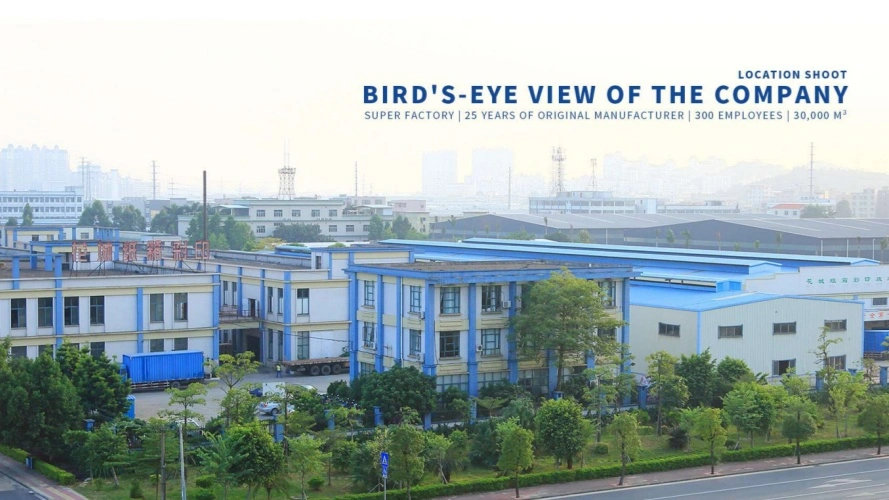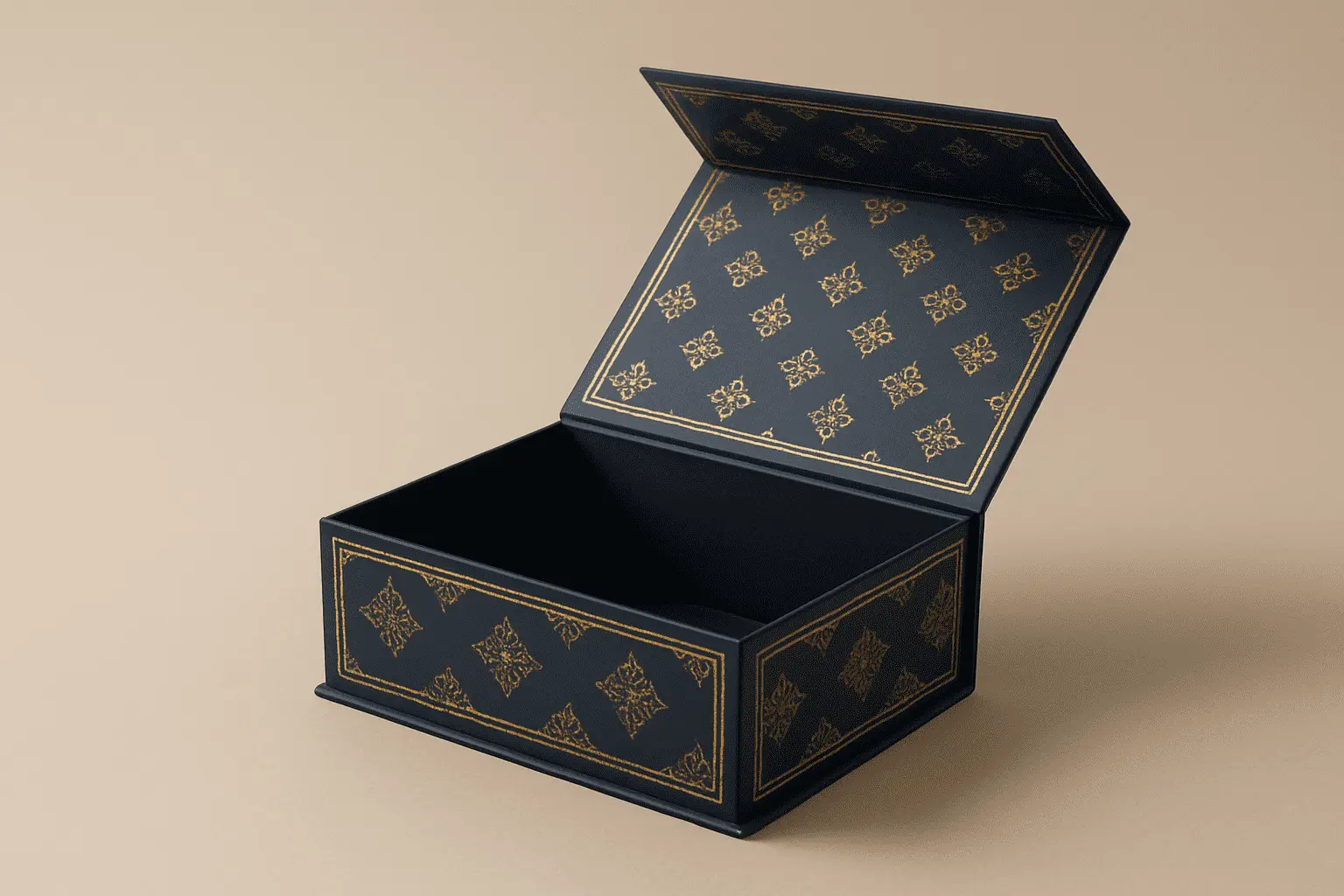When selecting the ideal lamination for your metallic paper box project, you need to consider several critical factors that will determine both the aesthetic appeal and functional performance of your packaging. The right lamination choice enhances the luxurious metallic finish while providing essential protection against scratches, moisture, and handling damage. Understanding the interplay between lamination types, substrate compatibility, and end-use requirements enables procurement professionals to make informed decisions that align with brand objectives and budget constraints.

Understanding Laminations for Metallic Paper Boxes
Lamination represents the process of applying a protective film or coating to packaging surfaces, transforming ordinary boxes into premium presentation pieces. For metallic substrates, this technique serves dual purposes: preserving the reflective qualities that make these materials so appealing while adding durability against environmental factors. The most prevalent lamination options include gloss and matte finishes, each offering distinct visual characteristics. Gloss laminations amplify the mirror-like properties of metallic surfaces, creating intense light reflection that catches consumer attention on retail shelves. Matte laminations, conversely, provide a sophisticated, subdued appearance that reduces glare while maintaining the underlying metallic shimmer. Specialized coatings like UV lamination offer enhanced scratch resistance and can be applied selectively to create striking visual contrasts. Soft-touch laminations introduce a velvety texture that transforms the tactile experience, making unboxing moments more memorable for end consumers. These treatments significantly impact customer perception and brand positioning. Luxury cosmetics brands often prefer soft-touch matte laminations for their premium feel, while electronics manufacturers might choose high-gloss finishes to convey technological sophistication. Understanding these market preferences helps guide lamination decisions that support broader marketing strategies.
Criteria for Selecting the Right Lamination for Your Metallic Paper Boxes
Effective lamination selection demands a systematic evaluation of multiple factors that influence both performance and cost outcomes. The screening process begins with understanding your product's specific protection requirements and the environmental conditions it will encounter throughout its lifecycle. Material compatibility stands as the primary consideration. Different metallic substrates respond variably to lamination processes, with some combinations producing superior adhesion while others may result in delamination or visual defects. Temperature sensitivity, moisture exposure, and handling intensity all influence which lamination types will perform optimally. Here are the essential evaluation criteria for lamination selection:
- Durability Requirements: Products destined for extended shelf life or rough handling need robust laminations with superior abrasion resistance. Heavy-duty applications benefit from thicker films that provide enhanced protection without compromising visual appeal.
- Visual Impact Goals: Brand positioning influences whether high-gloss enhancement or subtle matte sophistication better serves marketing objectives. Consider how lighting conditions in retail environments will interact with your chosen finish.
- Environmental Considerations: Sustainability mandates increasingly drive procurement decisions. Recyclable and biodegradable lamination options support corporate environmental commitments while meeting performance standards.
- Cost Structure Analysis: Minimum order quantities, tooling requirements, and production complexity vary significantly between lamination types. Budget allocation must account for both material costs and processing expenses.
These criteria work together to define the optimal balance between functional performance and economic viability. Procurement teams that systematically evaluate each factor typically achieve better outcomes than those making decisions based solely on aesthetic preferences or initial cost comparisons.
Comparing Lamination Types for Metallic Paper Boxes — Advantages & Disadvantages
Understanding the trade-offs between different lamination approaches enables more strategic decision-making. Each option presents unique benefits and limitations that must be weighed against specific project requirements. Gloss lamination delivers maximum visual impact by intensifying metallic reflectivity. This approach works exceptionally well for premium gift boxes and luxury product packaging where shelf presence drives purchasing decisions. However, gloss surfaces readily show fingerprints and scratches, potentially diminishing the premium appearance during handling. Matte lamination offers superior fingerprint resistance while providing a more tactile, sophisticated feel. This option appeals to brands seeking understated elegance rather than flashy presentation. The trade-off involves some reduction in metallic brilliance, though many designers prefer this more refined aesthetic. UV coatings represent a hybrid approach that combines enhanced durability with selective application possibilities. Spot UV treatments can highlight specific design elements while leaving other areas with different finishes. This technique adds production complexity and cost but creates unique visual effects difficult to achieve through other methods. Emerging eco-friendly laminations address growing environmental concerns while maintaining acceptable performance levels. Water-based and bio-degradable options support sustainability goals, though they may require additional testing to ensure compatibility with specific metallic substrates and printing processes. Soft-touch laminations transform the user experience by introducing velvet-like textures that enhance perceived value. Premium brands increasingly adopt this approach for products where tactile interaction plays a significant role in consumer satisfaction. The enhanced manufacturing complexity typically justifies higher costs through improved brand differentiation.
Practical Tips and Steps to Select and Implement Laminations
Successful lamination implementation requires a structured approach that begins with clear objective definition and progresses through systematic evaluation and testing phases. This methodology reduces risks while ensuring alignment between technical capabilities and business goals. The process starts with comprehensive stakeholder consultation involving marketing, design, and production teams. Each group brings essential perspectives that influence lamination requirements. Marketing teams understand brand positioning needs, designers focus on aesthetic goals, and production specialists evaluate manufacturing feasibility. Material compatibility assessment represents the next crucial step. Different substrates and printing methods interact variably with lamination processes. Thorough testing prevents costly surprises during production runs while identifying optimal processing parameters. Sample evaluation provides tangible evidence of how different lamination options will perform in real-world conditions. Request samples that undergo accelerated aging tests, scratch resistance evaluation, and visual inspection under various lighting conditions. This testing phase often reveals subtle differences not apparent in initial specifications. Cost-benefit analysis should encompass the complete product lifecycle rather than focusing solely on initial material expenses. Consider factors such as inventory carrying costs, damage rates during shipping, and consumer satisfaction metrics that influence repeat purchase behavior. Clear communication with manufacturing partners ensures consistent execution of lamination specifications. Detailed technical drawings, color standards, and quality acceptance criteria prevent misunderstandings that could compromise final results. Regular quality audits throughout production maintain standards and identify potential issues before they impact large quantities.
Industry Trends and Future of Lamination in Metallic Paper Boxes
The packaging industry continues evolving toward more sustainable and technologically advanced lamination solutions. Traditional petroleum-based films face increasing scrutiny from environmental regulations and consumer preferences, driving innovation in bio-based alternatives. Smart coatings incorporating anti-counterfeit features represent an emerging trend particularly relevant for luxury goods and pharmaceutical applications. These technologies embed security elements directly into lamination layers, providing authentication capabilities while maintaining aesthetic appeal. Digital printing compatibility becomes increasingly important as brands demand shorter runs and faster turnaround times. Next-generation laminations must perform reliably with various digital printing technologies while maintaining the superior adhesion and durability characteristics expected in traditional offset applications. Recyclability considerations now influence lamination selection from project inception rather than being addressed as an afterthought. Brands proactively seek solutions that support circular economy principles while meeting performance requirements. This shift requires closer collaboration between material suppliers, converters, and recycling facilities to ensure end-of-life processing capabilities. Automation in lamination processes enables more consistent quality and faster production speeds. Advanced monitoring systems detect defects in real-time, reducing waste and ensuring uniform results across large production runs.
FetchingPrinting: Your Partner for Premium Metallic Paper Box Solutions
With over two decades of experience in premium packaging manufacturing, FetchingPrinting specializes in delivering sophisticated lamination solutions that enhance the luxury appeal of your products. Our 35,000 square meter facility houses state-of-the-art equipment including advanced UV coating systems and precision lamination lines that ensure consistent, high-quality results for every project. Our proprietary collapsible rigid box designs offer significant cost advantages while maintaining the premium appearance your brand demands. These innovative structures, available in Large, Medium, and Tiny sizes, reduce shipping and storage costs by more than 60% compared to traditional rigid boxes while supporting the full range of lamination options including hot foil stamping, UV coatings, and soft-touch finishes. The comprehensive material selection available through our facility includes premium substrates specifically optimized for metallic effects. SBS C1S and C2S boards provide excellent print surfaces for metallic applications, while our specialized metallic papers deliver exceptional reflective properties that respond beautifully to various lamination treatments. Our team of more than ten packaging engineers brings extensive expertise in matching lamination specifications to specific performance requirements. This technical depth ensures that your metallic paper box projects achieve optimal results while meeting budget and timeline constraints. We maintain certifications including ISO14001-2015 Environmental Management System and FSC standards, supporting your sustainability objectives without compromising quality.
Frequently Asked Questions
Q1: What factors should I prioritize when choosing lamination for high-volume metallic packaging projects?
A: Focus on durability requirements, cost per unit including minimum order quantities, and production scalability. High-volume projects benefit from standardized lamination types that offer consistent quality and favorable economics while meeting your protection and aesthetic requirements.
Q2: How do different lamination types affect the recyclability of metallic paper boxes?
A: Traditional plastic laminations can complicate recycling processes, while water-based and bio-degradable options generally maintain recyclability. Consult with your packaging partner about eco-friendly alternatives that meet performance requirements while supporting sustainability goals.
Q3: Can metallic substrates accommodate multiple lamination processes for enhanced visual effects?
A: Yes, combining techniques like spot UV with matte lamination creates striking visual contrasts. However, multiple processes increase complexity and cost. Work with experienced manufacturers to ensure compatibility and optimal sequencing of different treatments.
Partner with FetchingPrinting for Superior Metallic Paper Box Manufacturing
Choosing the right metallic paper box supplier requires finding a partner who understands both the technical complexities of lamination processes and the strategic importance of packaging to your brand success. FetchingPrinting combines advanced manufacturing capabilities with deep industry expertise to deliver solutions that exceed expectations.
Our streamlined ordering process begins with comprehensive demand consultation, followed by customized solution design that addresses your specific requirements. We create detailed samples for approval before moving to full production, ensuring complete satisfaction with both aesthetic and functional performance. The combination of our proprietary collapsible designs and advanced lamination capabilities provides unique value propositions unavailable from conventional packaging suppliers.
Ready to explore how our lamination expertise can enhance your next packaging project? Contact us at public@fetchingprinting.com to discuss your requirements with our technical team. We provide detailed consultations, sample development, and competitive pricing for all metallic packaging applications. Let us help you create packaging solutions that strengthen your brand while optimizing costs and performance.
Conclusion
Selecting appropriate laminations for metallic paper boxes requires balancing aesthetic goals, functional requirements, and economic constraints. Success depends on understanding how different lamination types interact with metallic substrates and match specific application needs. Systematic evaluation of durability, visual impact, sustainability, and cost factors leads to optimal decisions that support both immediate project goals and long-term brand objectives. Partnering with experienced manufacturers who offer comprehensive lamination capabilities and proven expertise ensures successful outcomes while maintaining competitive advantages in demanding markets.
References
1. Smith, J.A. & Thompson, R.K. (2023). "Advanced Lamination Techniques for Metallic Packaging Substrates." Journal of Packaging Technology and Research, 47(3), 156-172.
2. Chen, M.L., Davis, P.W., & Rodriguez, C.E. (2022). "Sustainable Coating Solutions for Premium Paper-Based Packaging." International Packaging Science Quarterly, 38(4), 89-104.
3. Williams, D.R. & Anderson, K.M. (2023). "Cost-Benefit Analysis of Lamination Options in B2B Packaging Procurement." Supply Chain Management Review, 29(2), 67-81.
4. Taylor, S.J., Brown, L.P., & Kim, H.S. (2022). "Environmental Impact Assessment of Modern Packaging Lamination Processes." Sustainable Packaging Today, 15(7), 23-39.
5. Johnson, R.B. & Miller, A.C. (2023). "Quality Control Standards for Metallic Paper Box Manufacturing." Packaging Quality International, 31(5), 112-128.
6. Garcia, F.M., Wilson, T.D., & Lee, Y.K. (2022). "Innovation Trends in Protective Coatings for Luxury Packaging Applications." Advanced Materials in Packaging, 19(8), 45-62.


